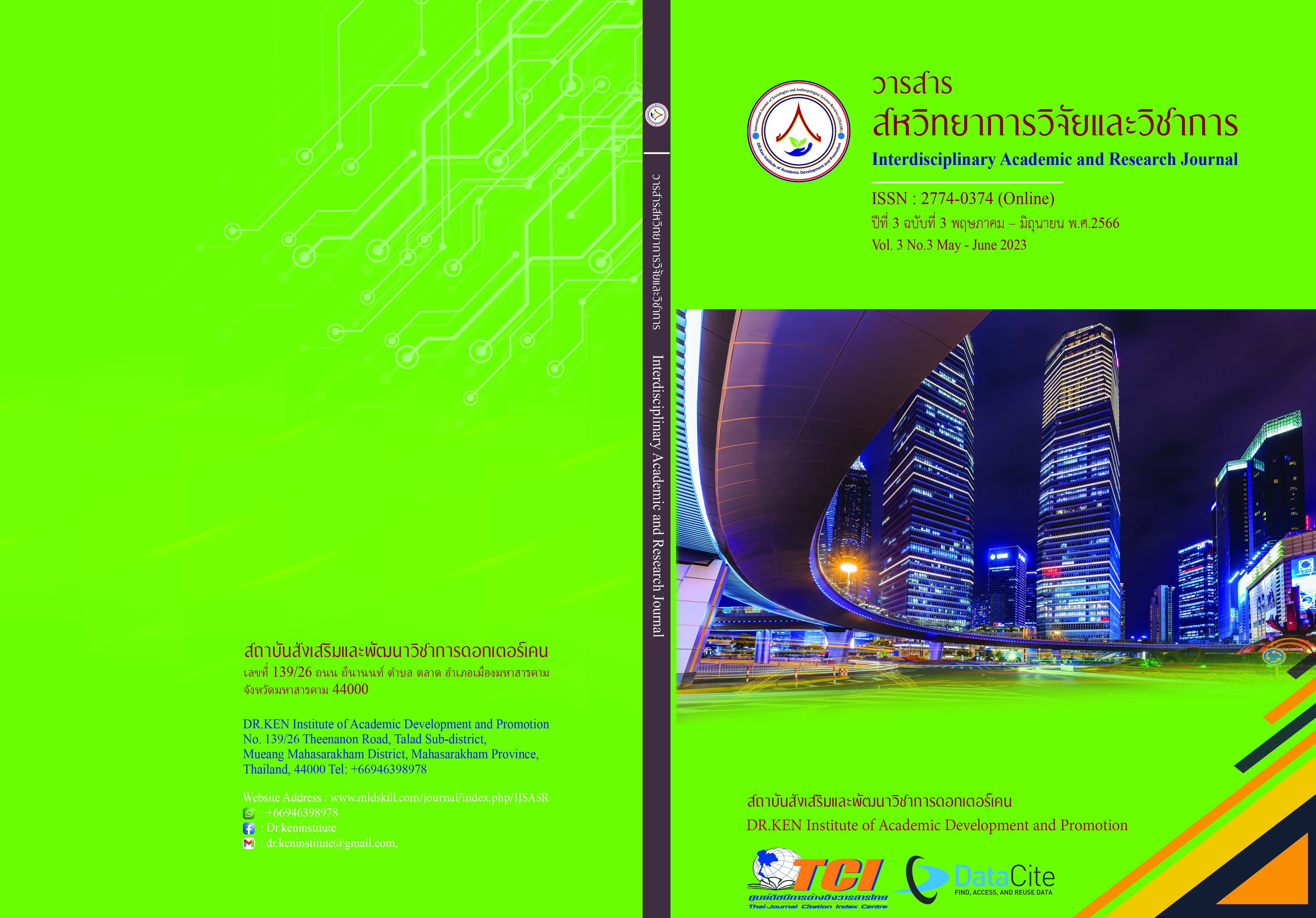The Relationship between Body Composition and Agility in the Students of the Faculty of Sports Science and Technology Bangkok Thonburi University
DOI:
https://doi.org/10.14456/iarj.2023.148Keywords:
Body Composition; , AgilityAbstract
Body size and composition are one of the most important components of a person's ability to move. Obese people are seen to move more slowly than normal people or their ability to agility is reduced. The purpose of this research was to study the relationship between body composition and agility. The sample used in this study was male students from the Faculty of Sports Science and Technology. Bangkok Thonburi University, 3rd year, academic year 2022, 36 people. The subjects measured their body composition, Body mass index (BMI), fat percentage, abdominal fat levels, muscle level in the body, and bone mass from scales and body composition measurements Bioelectrical Impedance Analysis (BIA). After that, test the agility with the agility test consisting of a t-test, FAF's Slalom test, SEMO test, and 5-10-5 Agility test. The results showed that BMI had a low positive correlation with the t-test (r=.334*), the fat percentage had a low positive correlation with the t-test (r=.441**.), the visceral fat level has a low positive correlation with the t-test (r=.409*), muscle mass has a low negative correlation of muscle mass with t-test (r=-.400*) and bone mass had a low positive correlation with the t-test (r=.396*). Therefore, from the information that appears, it can be concluded that BMI is at a normal level, a Low percentage of fat and visceral fat, a low weight of bone mass, and a muscle mass high level in the body results in more effective agility.
References
บุญร่วม เทียมจันทร์ และ ศรัญญา วิชชาธรรม (2561). ยุทธศาสตร์ชาติ 20 ปี (พ.ศ. 2561-2580). กรุงเทพฯ : The Law Group.
Aurelio, J., Dias, E., Soares, T., Jorge, G., Espada, M. A. C., Filho, D. M. P., Pereira, P., & Figueiredo, T. (2016). Relationship between Body Composition, Anthropometry, and Physical Fitness in Under-12 Soccer Players of Different Positions. Int J Sports Sci, 6(1A), 25-30.
Diego, H. F., Diogo, H. F., Antonio, C. D., Luiz, C. R. S., & Helcio, R. G., (2021). Evaluation of body composition and its relationship with physical fitness in professional soccer players at the beginning of pre-season. Retos, 40, 117-125.
Hinkle, D.E., William, W., & Stephen G.J., (1998). Applied Statistics for the Behavior Sciences. 4th edition. New York: Houghton Mifflin
Hondt, E. D., Deforche, B., De Bourdeaudhuij, I., & Lenoir, M. (2009). Relationship between motor skill and body mass index in 5- to 10-year-old children. Adapted Physical Activity Quarterly, 26(1), 21-37
Kostopoulou, E., Avgeri, A., Skiadopoulos, S., Dimitriou, G., Giannakopoulos, I., (2021). The association between excess weight and body composition measurements in a pediatric population. Journal of Pediatrics, Perinatology, and Child Health, 5, 142-157.
Landry, B. W., & Driscoll, S.W., (2012). Physical activity in children and adolescents. PM&R, 4(11), 826-832.
Nićin, Đ., (2000). Antropomotorika. [Anthropomotorics]. Novi Sad: Fakultet fizičke culture.
Parseh, A., & Solhjoo, M. H., (2015). Studying the relationship between body mass index with speed, agility, and balance in male students of 15-13 years old. Indian Journal of Fundamental and Applied Life Sciences, 5(S2), 382-387.
Silassie, A. G., & Demena, T., (2016). A study of agility, coordination, and speed as related to dribbling and kicking performance of Jimma, Woliso, and Sebeta town male football players. Journal of Physical Education Research, 3, 47-55.
Simmonds, M., Llewellyn, A., Owen, C. G., & Woolacott, N., (2016). Predicting adult obesity from childhood obesity: A systematic review and meta-analysis. Obesity Reviews, 17(2), 95-107.
Ugarković, D., (2001). Osnovi Sportske Medicine (The Basics of Sports Medicine In Serbian). Beograd: Viša škola za sportske trenere.
Downloads
Published
How to Cite
Issue
Section
License
Copyright (c) 2023 สิทธิพร พันธุ์พิริยะ, ประกิต หงษ์แสนยาธรรม, ยูรสิน วัฒนพยุงกุล, พิชยา นพกาล

This work is licensed under a Creative Commons Attribution-NonCommercial-NoDerivatives 4.0 International License.
Copyright on any article in the Interdisciplinary Academic and Research Journal is retained by the author(s) under the under the Creative Commons Attribution-NonCommercial-NoDerivatives 4.0 International License. Permission to use text, content, images, etc. of publication. Any user to read, download, copy, distribute, print, search, or link to the full texts of articles, crawl them for indexing, pass them as data to software, or use them for any other lawful purpose. But do not use it for commercial use or with the intent to benefit any business.
















.png)


